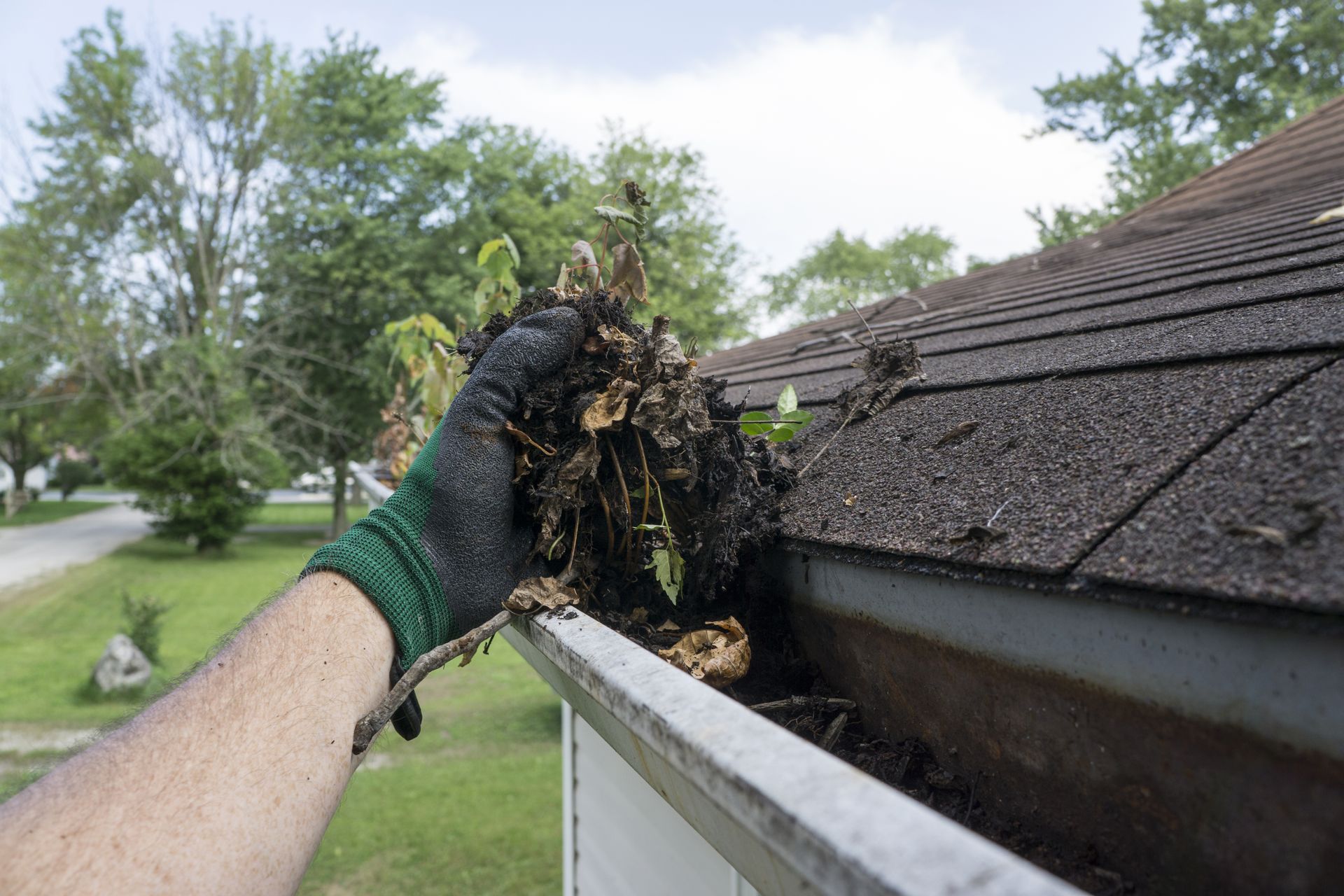Six Steps to Get Gutters Ready For Rainy Season
Step-by-step guide to checking your gutters
The rainy season is upon us. Are you ready? And more specifically, have you checked your gutters? It’s easy to put off this task, but if you want to have a properly working drainage system and reduce the strain on your roof, it’s a must. You can do a gutter evaluation by yourself. Use our step-by-step guide to check your gutters.

Why you should check your gutters
Gutters are usually an afterthought… until you have problems with them. Gutters are exposed to leaves, twigs, and all the elements, so having your gutters in tip-top shape is essential to keep your home protected from excess water.
Faulty gutters that aren’t properly maintained can cause mold growth, lead to a leaky roof, or even water damage to your windows and other exterior spaces.
Cleaning and checking your gutters for problems is the best way to prevent anything serious from developing. It will save you money and time in the long run.
What to look for when checking your gutters
You need to make sure the gutters are working well when it rains and that there are no problems coming up. Here are some of the signs you’ll be looking for: cracks and leaks, loose gutters or faulty hangers, and pooling water.
How to check your gutters
1. Pick the right time to clean the gutters
To check your gutters, you need to clean them first in order to make sure they work properly.
In general, cleaning your gutters in the spring is the best option. Try to avoid scheduling your cleanup after rain. If possible, allow a few days so the debris can dry. Taking out wet debris is more difficult and tiresome, so don’t make it unnecessarily hard to do.
Cleaning gutters should usually take you a few hours or an afternoon. However, plan for more time if the last time you cleaned them was more than a year ago. Adding it to your calendar to do 3 to 4 times a year is not a bad idea.
2. Use the proper equipment to access the gutters
The right tools will make your job easier and faster. Start with a proper ladder. Cleaning gutters can be the difference between a routine maintenance job and a very dangerous accident.
To avoid climbing up and down the ladder several times, gather all your equipment before actually starting. Luckily, there’s no need for fancy tools. Here’s what you’ll probably need to clean your gutters:
- A good ladder: We recommend using a step ladder, never climbing above the second to last step. If your home has two stories, use an extension ladder with a stabilizer. Better yet, recruit a partner to work with you to hand your supplies and to steady the ladder.
- Gloves: To protect your hands, we recommend thick, waterproof gloves.
- Security glasses: The debris that comes off your gutters tends to fly away in a million directions, so keep your eyes safe.
- Buckets: We recommend having two. One for the debris you’ll be taking out, and the other for your tools. If possible, hook them to your ladder to have them on hand while working.
- Hose: Use the hose to clean smaller debris and check for water flow after you’re done.
- Trowel: To remove smaller, caked-on debris.
3. Clear the debris and flush the gutters
Take out big leaves, twigs, and any other debris with your hands. Begin near the downspout and work your way to the closed end. After you’ve cleared large debris, take a small trowel and remove compacted debris to the best of your abilities. You can also use a gutter scoop if you have one. Finally, once most of the debris has been taken care of, take the hose and flush your gutters out. Make sure to use a strong water stream and point it to the gutter instead of the roof. This will remove the final bits and dirt from the gutter without getting water underneath the shingles.
4. Clear the downspout strainer
Start near the downspout and clear the strainer of any debris. If you haven’t done gutter maintenance in a while, this is where critters might have been living. Be careful and use your gloves. If you have a removable drainer, take it out and rinse it off with a hose. For debris that’s dry and hard, you might need to soak in some water while you keep cleaning.
PRO TIP: Check for wear and tear in the strainer: it’s common to find holes or cracks. If that's the case, try to replace it ASAP. Strainers are very useful to keep your downspout debris-free and avoid clogs. You’ll probably find replacement parts at your local store.

5. Test the downspout
After you’ve cleared the strainer, put it back and use your hose to check the flow. Water should easily come down the bottom. If it doesn’t, you’re dealing with a clog and might have to use a plumber’s snake to loosen it up. While you’re at it, make sure there are no leaks and that the downspout is still firmly attached to the house.
6. Check for tell-tale signs that your gutters need replacement
Once everything is squeaky clean, it’s time to check your gutters. This part has two sections: you’ll need to evaluate your gutters both from up on the ladder and then from the ground. From above, you will be checking for function. Keep an eye out for:
- Standing water: If water is pooling in some sections instead of flowing to the downspout, this means the slope isn’t right. Gutters should slope about ¼ inch for every 10 feet. You can fix this by adjusting the hangers.
- Leaks and holes: Check if water is coming out of where it shouldn’t. If that’s the case, think about replacing that section of gutters entirely.
- Missing or damaged sealant: Check if the sealant is working properly and if it’s lifted or might be leaking. This is one of the easiest signs to miss!
- Loose hangers: This would make your gutter saggy or loose. Screw it back on or add a couple of extra hangers to reinforce that section.
Once you’ve checked from above, climb down the ladder and do a quick survey from below. You’ll be visually checking the underside of the gutters to make sure everything is working as it should. Look out for:
- Sagging or loose gutters: Even if you already checked from above, keep an eye out for loose gutters or ones that might be sagging visibly. You can add more hangers to fix this issue.
- Bents or cracks: Check especially on the underside of the gutter. Even if a crack isn’t leaking, it will get worse with time and rain. Make a note of cracked sections and try to replace them as soon as possible. Bent gutters are more common in places where it gets really hot in the summer. You should also replace bent gutters as soon as you see them.
- Peeling paint and rust: Check for these both on the underside of the gutters and on the siding of your home. Peeling paint and rust means water is going where it shouldn’t, and can point out to a bigger problem with your gutters. Prevent this from getting worse by replacing those sections altogether.
After you’ve done this, your gutters will be ready for the season.
Realize, too, that climbing on ladders and cleaning gutters is not something just anybody should be doing. Nobody wants their grandparents falling off ladders and ending up in the ER. People are busy, as well. Getting your gutters cleaned and inspected is definitely something the average homeowner should consider hiring out.
A qualified, experienced roofing company can perform regular maintenance checks on your roof and gutters. They know what issues and possible gutter problems to look out for and can offer solutions. Regularly checking and maintaining the gutters is an important factor in the overall functioning and longevity of your roofing system.











